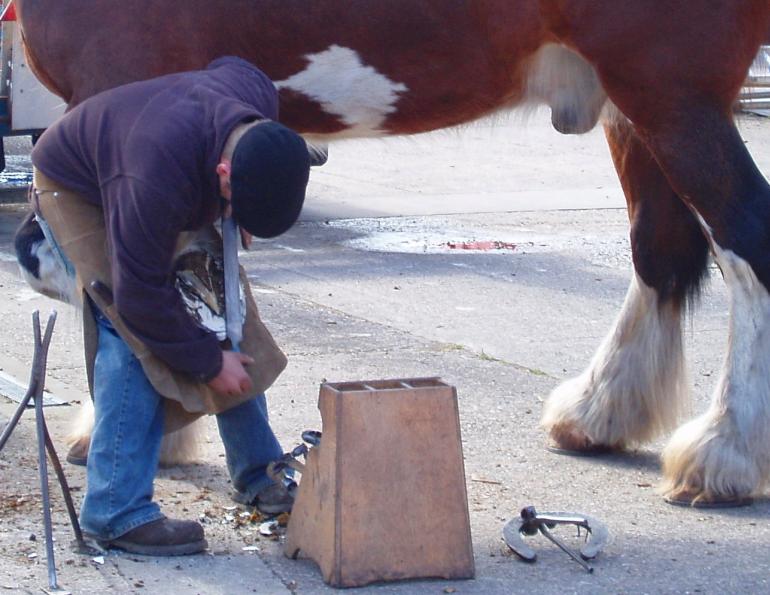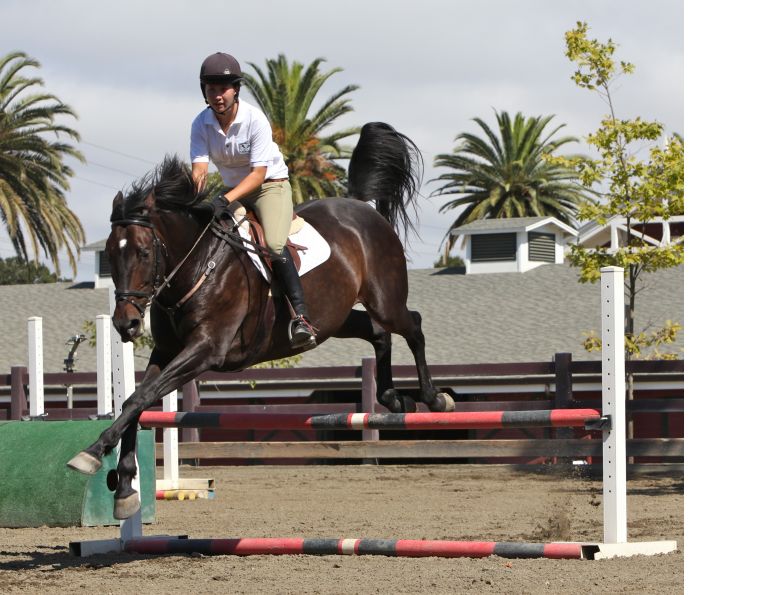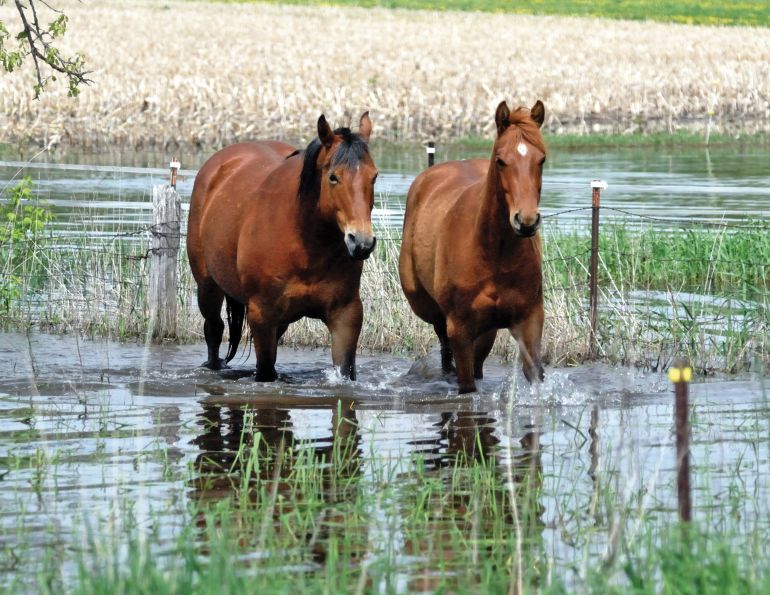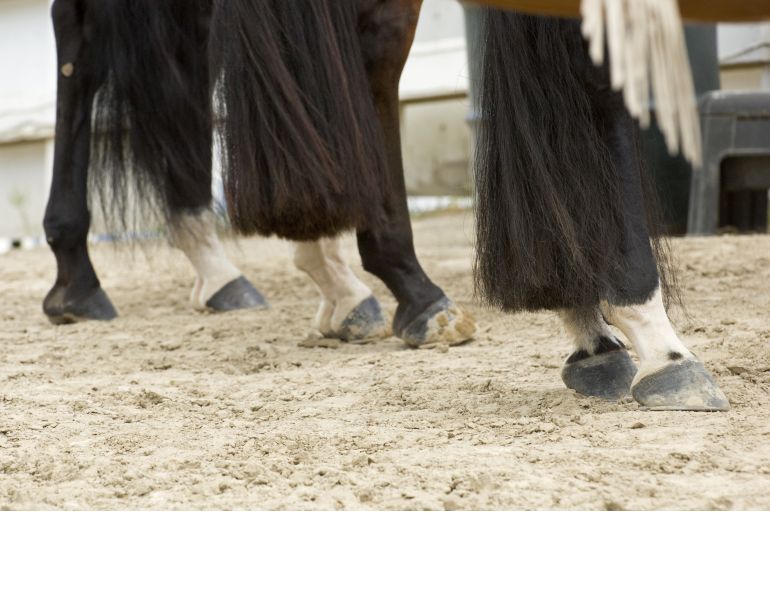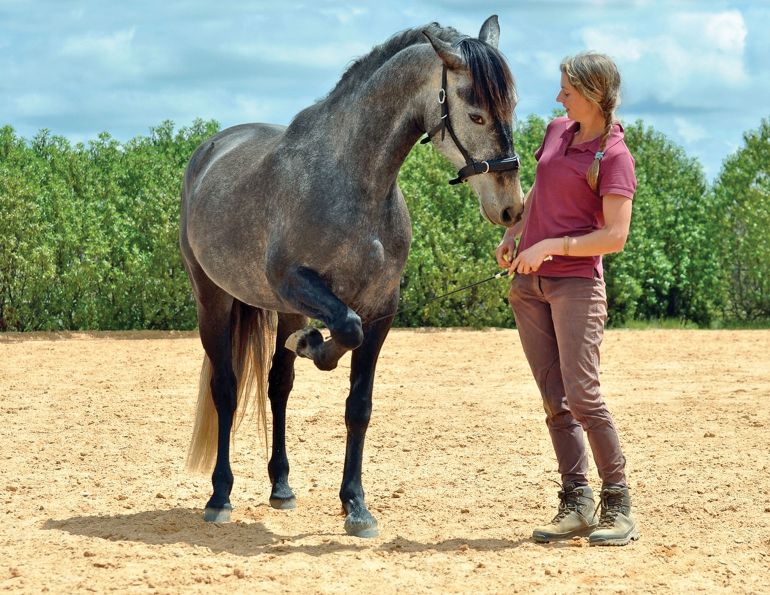By Robyn Moore, Horse Industry Association of Alberta
Without healthy hooves, horses are just expensive pasture ornaments. One of the most important things you can do as a horse owner or rider is to properly maintain your horse’s feet, and this involves finding a good farrier.
Before starting the search for a farrier it must be understood that a horse’s feet need to be trimmed REGULARLY. It is standard practice to have a horse’s feet trimmed every four to eight weeks depending on growth rate, season, and the discipline they are involved in. A retired pasture horse living out its days still needs its hooves trimmed every six to eight weeks. A grand prix show jumper needs his feet trimmed and shod every four to six weeks during peak competition season. The difference is clear but the message is the same; a horse needs to see a farrier regularly in order to maintain good health.
Farriers are skilled in the area of hooves and their care to the extent that if something goes wrong, they can be directly involved in the treatment plan for your horse, along you’re your veterinarian and other professionals. Farrier work is not something that should be overlooked or undervalued and it should not be attempted by an untrained owner or friend.
There are many factors to take into consideration when choosing the right farrier. Here are a few guidelines to ensure you are getting the right person for the job.
1. Know your area. Search out farriers who are working in your area through local resources like a farrier supply shop, tack store bulletin board, or veterinary clinic. The American Farriers Association website (www.americanfarriers.org) has a “Find a Farrier” section where you can enter your province or state and see a list of registered farriers. These farriers have chosen to register with this association and are qualified under their guidelines. There is also the Western Canadian Farriers Association's Find a Farrier on their web site. Farrier colleges are another possible resource. The other great way to locate a farrier in your area is by word of mouth. It is common for happy customers to recommend their farrier to others.
2. Investigate credentials. Credentials will usually impact the quality of the work as well as the price and availability. Certified Journeyman Certified Journeyman Farrier Jason Wrubleski has been shoeing professionally for 20 years, is a past member of the Canadian Farrier Team, and former President of the Western Canadian Farrier Association. He believes that identifying a potential farrier’s training is important. “Farriers that have completed a reputable form of post-secondary education or an in-depth apprenticeship usually have steady work. Continuing education is a strong point to look for in a farrier. Do they attend farrier clinics regularly? Are they a member of an association? Farriers that do not like clinics or continuing education are usually afraid of it.”
3. Look at personality. Horse handling methods vary and you will likely be more comfortable with a farrier who subscribes to a similar methodology. A farrier should be someone you can talk to and maybe even have a few laughs with, not someone who you feel intimidated by or someone you feel you cannot trust. Jason echoes that sentiment: “The personality should be the same as other professionals – pleasant, reasonable, conversation savvy, and well educated about their profession.”
It is imperative that owners communicate with their farrier, so be sure that he/she is someone you feel comfortable conversing with. “In my business I always tell my clients there is no such thing as over communication,” says Jason. “We don't ride the horses that we shoe, so listening to the rider provides valuable information for the care of their feet.”
4. Explore expectations. Jason feels that both sides of the business relationship have a responsibility to one another. “Farriers are expected to do a great job, show up on time, return phone calls promptly, treat horses and owners with respect, and service their work. Owners are expected to have an appropriate work environment, remember appointments, discuss issues with the farrier first, and respect the farrier and the trade.”
He also explains that it is not the responsibility of the farrier to deal with dangerous horses or provide services above and beyond their trade. “Farriers are not hired to train horses, discipline them, deworm, catch, or do other jobs that exceed what should be expected. We truly appreciate well trained horses. Farriers should not go to work thinking they may get injured.”
5. Consider costs. Jason feels strongly about the issue of cost. “As far as cost goes I know most skilled farriers charge for time, supplies, travel, and skill level. I do not know farriers that will blindly gouge someone, but price is subject to change depending on the circumstances. Fair work for a fair price.” Farrier work is a necessary service required on a regular basis, so budget for it. Calculate in advance how many times you’ll need to see your farrier in a year, how many horses, and the requirements for each horse.
Remember, a great farrier will share their knowledge and experience, and will revel in your horse’s success with you as an owner, trainer, rider, groom, or coach. Having the right farrier is just as important as having the right shoes; it should be a good fit!
Reprinted with kind permission from the Horse Industry Association of Alberta.
Main Photo: Amanda Slater/Flickr



